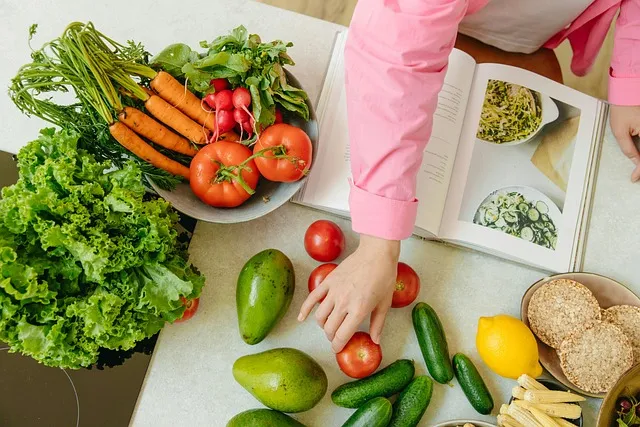Did you know that more than 4 million Americans suffer from peptic ulcers each year? It’s a painful condition, but there’s hope. Many patients turn to sucralfate, a medication that protects the stomach lining and helps ulcers heal. But here’s something often overlooked: the foods you eat while taking sucralfate can make or break its effectiveness. Some foods interfere with how the drug works, while others support recovery and soothe your digestive system. To help you get the best results, this guide explains which foods to avoid with sucralfate and which ones to include in your diet.
10 Foods to Avoid While Taking Sucralfate
Wondering “What not to eat when using sucralfate?” To help sucralfate work effectively, here are the dietary considerations you should follow:
1. Acidic Foods
-
Examples: Citrus fruits, Tomatoes, Vinegar, and Pickles.
-
Why to avoid: Increase stomach acid, working against sucralfate's effects.
2. Spicy Foods
-
Examples: Hot peppers, Curry dishes, Hot sauces, and Spicy seasonings.
-
Why to avoid: Irritates the stomach lining and slows healing.
3. High-fat or Greasy Foods
-
Examples: Fast food, Fried foods, Fatty meats, and Creamy sauces.
-
Why to avoid: It increases stomach acid production and is very hard to digest.
4. Carbonated Drinks
-
Examples: Sodas, Sparkling water, Carbonated drinks, and Fizzy alcoholic beverages.
-
Why to avoid: It increases stomach pressure, and a study reports that it also leads to acid reflux.
5. Caffeinated Beverages
-
Examples: Coffee, Tea, Energy drinks, and Chocolate drinks.
-
Why to avoid: Stimulate acid production and hinder sucralfate's effectiveness.
6. Alcohol
-
Examples: Beer, Wine, Spirits, and Mixed drinks.
-
Why to avoid: According to the 2021 research, alcohol increases acid production, which irritates the stomach lining.
7. Dairy Products
-
Examples: Whole milk, High-fat cheeses, Cream, and Ice cream.
-
Why to avoid: Increases stomach acid and interferes with sucralfate absorption.
8. Chocolate
-
Examples: Milk chocolate, Dark chocolate, Chocolate-flavored foods, and Cocoa powder.
-
Why to avoid: Contains caffeine, which leads to acid reflux.
9. High-Sugar Foods
-
Examples: Candy, Pastries, Sweetened beverages, and Sugary cereals.
-
Why to avoid: Feed harmful bacteria, which slow healing.
10. Raw Vegetables and High-Fiber Foods
-
Examples: Raw carrots, Broccoli, Cauliflower, Whole grains, Nuts, Seeds, and Legumes.
-
Why to avoid: Might irritate the stomach or be hard to digest.
While nutritious, these foods can be hard to digest, and they might irritate your ulcer. Think of them as well-meaning but misguided friends.
Here's a quick recap in tabular form:
|
Food Category |
Examples |
Why to Avoid |
|---|---|---|
|
Acidic Foods |
Citrus fruits, Tomatoes, Vinegar, Pickles |
Increase stomach acid, work against sucralfate's effects |
|
Spicy Foods |
Hot peppers, Curry dishes, Hot sauces, Spicy seasonings |
Irritates the stomach lining, slow healing |
|
High-fat or Greasy Foods |
Fast food, Fried foods, Fatty meats, Creamy sauces |
Increase stomach acid production, hard to digest |
|
Carbonated Drinks |
Sodas, Sparkling water, Carbonated drinks, Fizzy alcoholic beverages |
Increase stomach pressure and acid reflux |
|
Caffeinated Beverages |
Coffee, Teas, Energy drinks, Chocolate drinks |
Stimulate acid production, hinder sucralfate's effectiveness |
|
Alcohol |
Beer, Wine, Spirits, Mixed drinks |
Irritates the stomach lining, increasing acid production |
|
Dairy Products |
Whole milk, High-fat cheeses, Cream, Ice cream |
Increase stomach acid, interfere with sucralfate absorption |
|
Chocolate |
Milk chocolate, Dark chocolate, Chocolate-flavored foods, Cocoa powder |
Contains caffeine, which leads to acid reflux |
|
High-Sugar Foods |
Candy, Pastries, Sweetened beverages, Sugary cereals |
Feed harmful bacteria and slow healing |
|
Raw Vegetables and High-Fiber Foods |
Raw carrots, Broccoli, Cauliflower, Whole grains, Nuts, Seeds, Legumes |
Might irritate the stomach or be hard to digest |
How to Take Sucralfate Properly to Avoid Food Interactions?
Follow these tips:
-
Take the medicine on an empty stomach and 1 hour before & 2 hours after meals, which is the best time to take sucralfate.
-
Don't take antacids within 30 minutes before or after taking sucralfate, unless your doctor recommends.
-
Swallow the whole tablet to ensure correct ingestion and avoid issues, like the tablet sticking in your throat.
-
Shake the bottle properly if using the liquid form of sucralfate for even distribution of the medicine.
-
Take the medicine at consistent times every day for the best results.
-
Stay upright for at least 30 minutes after taking a medicine to avoid the chances of acid reflux.
-
Avoid caffeine, fatty foods, alcohol, and acidic foods to avoid stomach irritation.
-
Stay hydrated by drinking a lot of water to improve the digestion and healing process.
Do Foods Really Interact with Sucralfate?
Yes, some foods can interact with sucralfate and worsen the symptoms of ulcers, like pain. That's why the healthcare providers advise taking sucralfate on an empty stomach. This is because certain foods can block the effectiveness of this medicine by blocking it from attaching to the intestinal lining to form a barrier over ulcers and protect them from the impact of stomach acid (which is responsible for slow healing). So, avoid consuming foods around the dosing time of this medicine.
How Long After Taking Sucralfate Can You Eat Food?
To get the best results from sucralfate, timing is important:
-
Wait at least 2 hours after taking the medicine before eating.
-
Avoid eating for 1 hour before taking it.
This gap allows sucralfate to properly attach to the stomach lining, creating a protective barrier over ulcers and shielding them from stomach acid. This makes the medicine more effective.
For consistency, try to take sucralfate at the same time every day. This helps maintain steady levels in your body, improving its benefits while reducing side effects. And remember—always follow your doctor’s prescription.
Other Dietary Considerations While Taking Sucralfate
Beyond the foods to avoid while taking sucralfate, follow these tips for better results:
-
Eat smaller meals more often. This reduces stomach acid production.
-
Chew your food well. It helps with digestion.
-
Stay hydrated with water. But don't drink too much during meals.
-
Choose lean proteins like chicken and fish. They're easier on your stomach than red meat.
-
Cook your veggies instead of eating them raw.
-
Try probiotic-rich foods like yogurt. They support gut health.
-
Don't eat close to bedtime. It can cause nighttime acid reflux.
-
Keep a food diary. It helps identify your personal trigger foods.
When in doubt, seek medical help for personalized guidance.
Foods You Can Safely Eat with Sucralfate
Looking for an ulcer-friendly diet? Here are some safe foods for ulcer patients:
1. Lean Proteins (Fish, turkey, or boiled chicken)
Why to Eat: Support healing without increasing stomach acid or inflammation.
2. High-Fiber Foods (Whole grains, veggies, and fruits)
Why to Eat: Improve digestion and lower stomach acid.
3. Boiled or Baked Potatoes
Why to Eat: Filling and non-acidic, and helps satisfy hunger without causing soreness.
4. Steamed Vegetables (Carrots, green beans, or squash)
Why to Eat: Soft, low-acidic, and easily digestible.
5. Oatmeal and Plain Cereals
Why to Eat: Easy to digest, gentle on the stomach, and low in acidity.
6. Banana
Why to Eat: Soothing to the stomach and might help coat the intestinal lining.
7. White Rice
Why to Eat: Lowers irritation and provides energy without worsening symptoms.
8. Non-Dairy or Low-Fat Milk Alternatives (Oat or almond milk)
Why to Eat: Does not cause stomach irritation.
9. Probiotic Foods (Yogurt)
Why to Eat: Helps improve gut bacteria.
10. Peeled and Cooked Apples or Applesauce
Why to Eat: Mild and soothing on the stomach, easily digestible, and less acidic.
These foods help improve the protective action of sucralfate on the stomach lining, minimize stomach irritation, avoid excessive release of acid, and ease ulcer healing.
How to Manage Your Diet with Sucralfate
Managing your diet while on sucralfate doesn't have to be hard. Try these practical tips:
-
Plan your meals ahead. It helps avoid temptation.
-
Read food labels carefully. Look for hidden irritants.
-
Cook more meals at home. You control the ingredients.
-
Carry safe snacks with you. They're great for hunger emergencies.
-
Slowly reintroduce foods as you heal.
-
Listen to your body. If a food causes discomfort, avoid it.
-
Stay consistent with your medication schedule.
-
Don't skip meals. Hunger can increase stomach acid.
When to See a Doctor?
Seek medical help if you experience any of these symptoms despite correctly taking sucralfate:
-
Persistent or worsening stomach pain or cramps.
-
Nausea or vomiting, especially after taking it with food
-
Constipation
-
Bloating or feeling full after small meals
-
New or worsening symptoms like indigestion, acid reflux, and heartburn (due to food interference)
-
Unexplained weight loss
-
Allergic reaction with symptoms like trouble breathing, rashes, swelling, or itching (in rare cases)
Tip: Always note down the symptoms and food you consumed each day in a diary when starting the sucralfate treatment. This will help the doctor identify interactions more easily.
Final Thoughts
Remember, knowing which foods to avoid while taking sucralfate is just the start. Your healing journey is unique. Pay attention to how your body responds. When in doubt, always talk to your doctor. They can give you personalized advice. Share this info with friends and family who might be in the same boat.
Together, we can spread awareness and support faster healing. Ready to take control of your ulcer treatment? What's the first change you'll make to your diet today?
Also Read What Foods to Avoid When Taking Furosemide: A Guide for Patients
अक्सर पूछे जाने वाले प्रश्नों
What happens if you eat after taking sucralfate?
Sucralfate might not cover the ulcers effectively, which can slow down the healing. In addition, it may bind with foods and lead to blockage of the stomach & bowels.
Can I drink coffee while taking sucralfate?
It's best to skip coffee. It can increase acid production and mess with sucralfate's effectiveness. Try herbal teas or warm water with lemon instead.
How long after taking sucralfate can I eat?
Wait at least 30 minutes to an hour after taking sucralfate before eating. This gives the medicine time to form a protective barrier over your ulcer.
Are there any fruits I can eat while on sucralfate?
Yes, non-acidic fruits like bananas, melons, and apples are usually safe. Stay away from citrus fruits as they can increase stomach acid.
Can I take sucralfate with other medications?
Sucralfate can interact with other meds. Always check with your doctor or pharmacist about potential interactions and when to take your medications.
Is it okay to eat spicy foods occasionally while on sucralfate?
It's best to avoid spicy foods completely during treatment. Even eating them once in a while can irritate your ulcer and slow healing.
How long should I follow these dietary restrictions?
Stick to these guidelines throughout your sucralfate treatment and for a few weeks after. Your doctor can tell you when it's safe to start eating certain foods again.
Can I drink alcohol in moderation while taking sucralfate?
It's strongly recommended to avoid alcohol completely during sucralfate treatment. Even a little bit can irritate your stomach and interfere with healing.
लेखक






